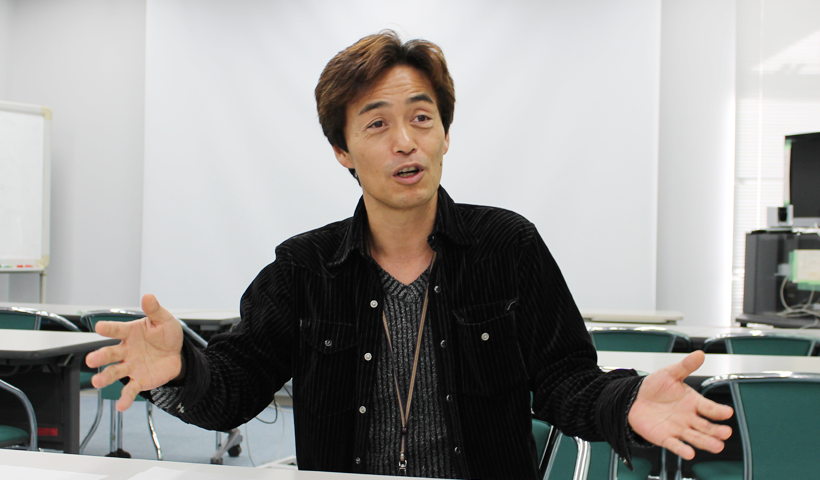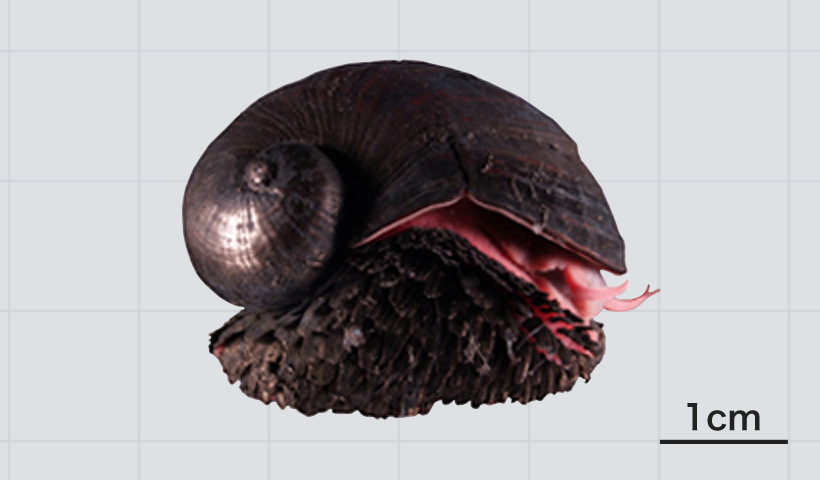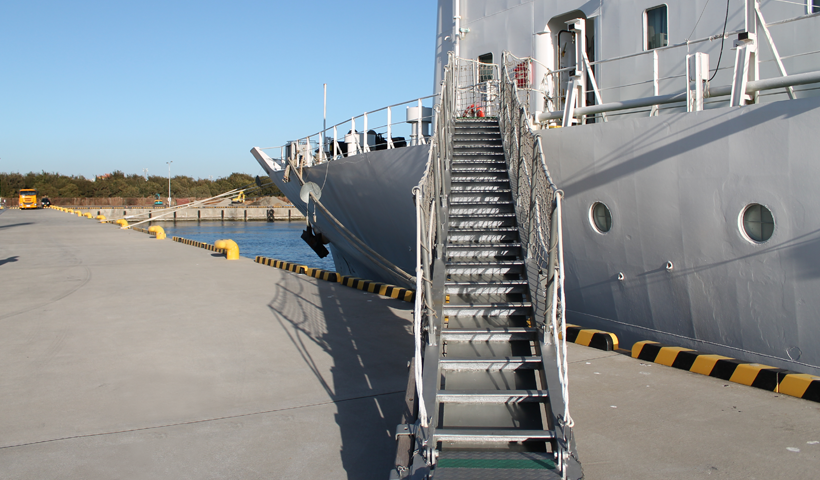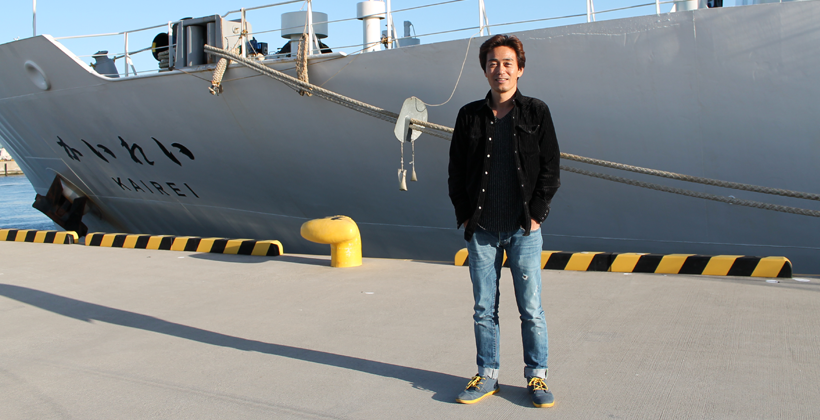HOME > List of Voice of grantees > Search for Ultra-Large Submarine Hydrothermal Deposits in the Deep Sea Off Okinawa
Search for Ultra-Large Submarine Hydrothermal Deposits in the Deep Sea Off Okinawa"Pursuit of Ideals" 3rd Grant Period: April 2012–March 2015
Details of research conducted during the grant period
In brief, establishing an effective method for detecting ultra-large submarine hydrothermal deposits; especially, development of a sensor for this method
When I was engaged in research on drilling the areas of hydrothermal activity in the Okinawa Trough and managed to obtain the results of this research, we applied for a Canon Foundation grant and the application was accepted. We had already considered an easy methodology for finding hydrothermal areas with a combination of ultrasonic exploration equipment on ships and a sensor that works in the deep sea. However, to put this method into practice, the sensor had to be of very high quality.
First, we searched for hot water in order to create a list of hydrothermal areas, and we selected an ultra-large hydrothermal area from the list. A multi-chemical sensor is the key to simultaneous search and selection of hydrothermal areas. The sensor measures chemical components in hot water in order to determine whether or not the deposit under the hot water is sizable. The research funded by the Canon Foundation was a development and field test of a multi-chemical sensor. Of course, the search for ultra-large hydrothermal deposits is a national project that cannot be covered with only a Canon Foundation grant. However, it is notable that development of the relevant sensor was pushed ahead by the Canon Foundation's grant, which also allowed for further improvement of the sensor.

The first hydrothermal area in the Okinawa Trough was discovered in 1987. Then, during the 25 years before the Canon Foundation grant was issued, only ten hydrothermal areas were detected. However, during the three years of the grant period, we were able to detect ten hydrothermal areas, which equal the number discovered in the preceding 25 years. Some are regarded as potentially ultra-large hydrothermal areas.
This research can be considered part of a national project. However, I think it presents a good opportunity for Japan as a whole to develop seabed resources, thanks to private funding such as the Canon Foundation grant. We are very grateful to the Canon Foundation for its grant, which enables us to conduct the challenging work of sensor development, an area for which it is difficult to obtain financial support.
Progress and developments following the research funding period
Meeting the Challenge of the Mariana Trench, the World's Deepest: The Sensor Continues to Evolve.
We spent two years engaged in the challenging work of sensor development. During the final year of the grant period, the sensor was proved to work in the deep sea. While using the sensor in 2016 and again in 2017 after the expiration of the grant period, we came to realize that the sensor was actually better than expected. Every time we attempted a practical use of the sensor, it proved to be outstanding in operation.

Scaly-foot gastropod: Chrysomallon squamiferum
Discovered in 2001 at a depth of 2,500 m in the Indian Ocean, this snail lives on the seabed, which is covered with iron sulfide scale.
Clearly, we need such a sensor to reveal the unknown world, specifically, the chemical ingredients that are consumed by living creatures in the deep sea, their rate of consumption, and their influence on the environment. After the expiration of the grant period, I became engaged in research in this field. The sensor development project funded by the Canon Foundation served as the underpinning for another study, which led to the creation of new scientific value. In the Indian Ocean, development of this sensor has resulted in identification of the chemical habitat of the scaly-foot gastropod (photo), which had remained a mystery for many years.
Currently, we are improving the sensor for use in Mariana Trench, the deepest part of the world, to ensure that the multi-chemical sensor developed with funding from the Canon Foundation functions properly in the "full-depth" regions. The features of this sensor could lead to a major discovery in the Mariana Trench.
What was most memorable during the grant period?
The best thing is that I was able to meet some outstanding researchers.
For young researchers like us, it has been a very good experience to debate with experts such as Dr. Kurokawa, the chief of the screening committee.
Under the strict tutorship of Dr. Kurokawa, we were able to expand our communication with other funded researchers, and we became good friends as trainees. Today, we maintain close ties with one another as a group of "comrades" and even real friends in some cases. The Canon Foundation provided us with opportunities to meet and communicate with one another, and to create a new community in addition to sharing the results of our research. It has been an outstanding pleasure for me.
What made you want to become a researcher?
I admired a particular biology teacher who had a unique way of thinking about time flow. Also, I wanted to win the Nobel Prize [laughs].
My biology teacher, who seemed to have a unique way of thinking about time flow in association with living things, greatly impressed me, and I admired his approach. This was my first inspiration. Additionally, I wanted to earn a Nobel Prize for time trends related to molecular biology. I sought to become someone special.

I also wanted to become a public prosecutor with the Tokyo District Public Prosecutors Office in order to prosecute criminals. That was only the simple reasoning of a young man. Anyway, I did want to become someone special [laughs]. After deliberating on what to choose, I decided to become a researcher because I could construct my own world. First, I wished to become a researcher, and then I sought to study marine science.
What inspired you to study marine science?

When I had to choose a research subject in my senior year of university, a friend advised me to choose this field in order to determine whether the key to the origin of life exits in the hydrothermal areas of the deep sea. Research on this field is not a path to the Nobel Prize [laughs]. I thought that exploring deep-sea life might be a more interesting and exciting subject with some adventure, so I decided to pursue it. Studying the origin of life excites the romantic spirit, because the realities are difficult to grasp. This is what attracted me.
Now, the origin of life can be clarified by reproductive experiments on land, as well as through field observation and measurement. The origin of life has become a field of science. It's very exciting.
What are your dreams for the future?
I hope to enter untrodden environments and other fields in order to leave my mark on science. (It could even be space science). I wish to achieve results in my research so that people of the future can see the footprints of Ken Takai, Japanese researcher.
I wish to study science that transcends ages, spaces, and regions. For the benefit of people in the future.

Profile
Ken Takai
National Research and Development Agency, Japan Agency for Marine-Earth Science and Technology
Chief of Deep Sea/Crust Biosphere Research (Doctor of Agriculture)






